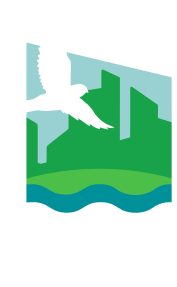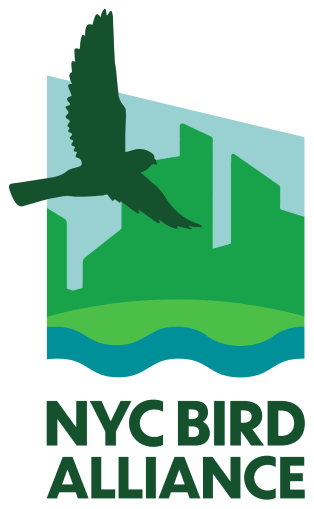Conservation
Jamaica Bay is one of New York City's many significant wildlife habitats for both breeding and migratory birds. Photo: François Portmann
For 45 years, NYC Bird Alliance's conservation programs have studied and advocated on behalf of the City's wild birds. NYC Bird Alliance, working with a network of volunteers and scientists, has fought to preserve all bird habitat, from marshlands and nesting islands for herons and egrets to woodland park areas so important to migrating and nesting species.
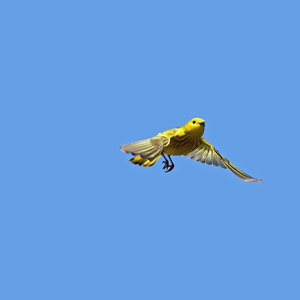
Yellow Warblers migrate through New York City, stopping in our parks to feed and rest. This beautiful species also nests in all five boroughs. Photo: Pat Schleiffer
Project Safe Flight
Every spring and fall, millions of birds migrate through New York City, journeying along the “Atlantic Flyway” from wintering territory in South and Central America to breeding grounds as far north as the Arctic Circle. As this huge variety of birds—from songbirds to raptors to shorebirds—repeat their ancient cycle of migration, they encounter two relatively new threats: glass windows and artificial nighttime lighting. According to NYC Bird Alliance's research, between 90,000 and 230,000 of these migrating birds are killed in the City each year in collisions with building glass. Project Safe Flight is a decades-long campaign to offer these birds safe passage.
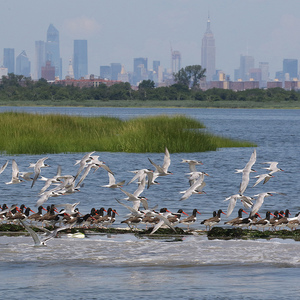
Common Terns and American Oystercatchers in Jamaica Bay Wildlife Refuge, Queens. Photo: Don Riepe
Birds of NY Harbor
NYC Bird Alliance has a 40-year history of protecting the wading birds, shorebirds, and waterfowl that depend on New York City’s wetland and coastal habitats. Our rich and recovering harbor is home to an incredible diversity of these waterbirds: wild islands host nesting egrets, herons, and ibis, while sandy beaches and marshes provide both breeding and migratory foraging grounds for endangered waterbirds like terns, skimmers, and sandpipers.
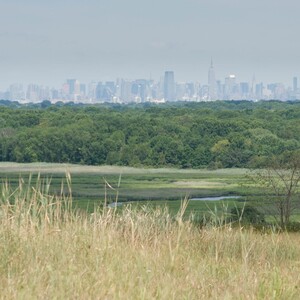
Staten Island’s Freshkills Park includes varied types of habitat including grasslands, wetlands, and woodlands. Photo: James Dunham/CC BY-SA 2.0
Habitat Protection
The greatest global threat to birds is habitat loss and degradation. New York City, the most densely populated major city in the United States, is nevertheless traced by a vast network of viable bird habitat: 30,000 acres of forests, grasslands, wetlands, and islands, and 578 miles of waterfront.
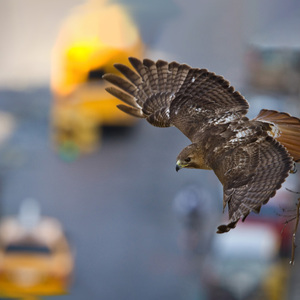
A parent Red-tailed Hawk flies from its nest over the New York City streets. Photo: François Portmann
Urban Raptors
New York City: the City that Never Sleeps, the Center of the Universe…and a major raptor hotspot? It comes as a shock to many that in our huge metropolis, birds of prey could find a place to even survive, let alone thrive. Learn about the birds of prey that surprisingly call New York City home.
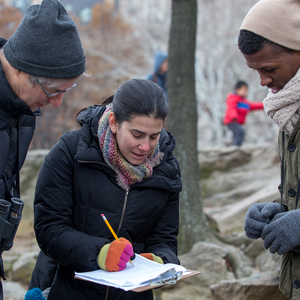
Participants tally their findings during the Audubon Christmas Bird Count in Central Park. Photo: Camilla Cerea/National Audubon
Community Science Bird Surveys
NYC Bird Alliance’s conservation programs are led by a professional science staff today—but the organization was founded by passionate birders and volunteer conservationists. Many in our community today are highly skilled birders with knowledge gained over years of careful observation in the field. Those skills are needed! Today it is as critical as it ever has been that we document changes in bird populations, as they face increasing pressures from threats such as habitat loss, environmental contamination, and global climate change.
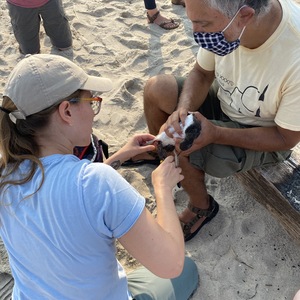
Associate Director of Conservation and Science Kaitlyn Parkins and Conservation Field Biologist Emilio Tobón band an American Oystercatcher on Breezy Point beach. Photo: Sohel Shah
Research Publications
Our conservation team has been conducting crucial research on New York City's birds, their habitats, and the conservation threats they face in our city, stretching back the past 35 years.
